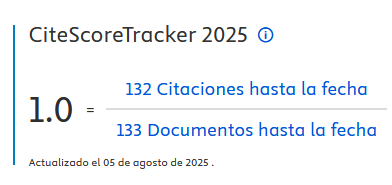Principios y prácticas recomendadas para la prestación de servicios psicosociales humanistas: una alternativa a las directrices establecidas en la práctica y el tratamiento
DOI:
https://doi.org/10.33898/rdp.v15i57.729Palabras clave:
psicólogos humanistas, crecimiento psicológicoResumen
Los psicólogos humanistas constituyen su propia comunidad de práctica y mantienen su propia y particular visión de la naturaleza humana, de la ciencia, de la metodología de investigación y de la psicoterapia. La psicoterapia humanista se ocupa de la disfunción psicológica en el contexto amplio del compromiso del paciente con su vida y los modos de vida en el mundo. Los psicólogos humanistas están orientados a la promoción del desarrollo y el crecimiento psicológico de los individuos, las familias y las comunidades a través del apoyo de su propio esfuerzo creativo. El presente documento es un informe de los principios recomendados para la prestación de servicios psicológicos humanistas, de psicoterapia en particular, aunque los principios dilucidados se aplican también a la prestación de otros servicios psicológicos. Tiene como objetivo facilitar y asistir a la prestación de servicios, pero no pretende ser obligatorio, exhaustivo, ni definitivo y puede no ser aplicable a todas las situaciones. No debe ser interpretado como definitivo y no pretende imponerse por encima del juicio de los psicólogos.
Descargas
Descargas
Publicado
Cómo citar
Número
Sección
Licencia
Los autores/as que publiquen en esta revista aceptan las siguientes condiciones:
- Los autores/as conservan los derechos de autor y ceden a la revista el derecho de la primera publicación, con el trabajo registrado con la Creative Commons CC-BY-NC 4.0 Internacional, que permite a terceros citar el texto y usarlo sin alterarlo y sin beneficio económico, siempre que mencionen la autoría del trabajo y la primera publicación en esta revista.
- Los autores/as pueden realizar otros acuerdos contractuales independientes y adicionales para la distribución no exclusiva de la versión del artículo publicado en esta revista (p. ej., incluirlo en un repositorio institucional o publicarlo en un libro), siempre que indiquen claramente que el trabajo se publicó por primera vez en esta revista.
- Las opiniones expresadas en los trabajos son responsabilidad única de los/as autores/as, no reflejando en ningún caso las opiniones o políticas científicas de la revista.














